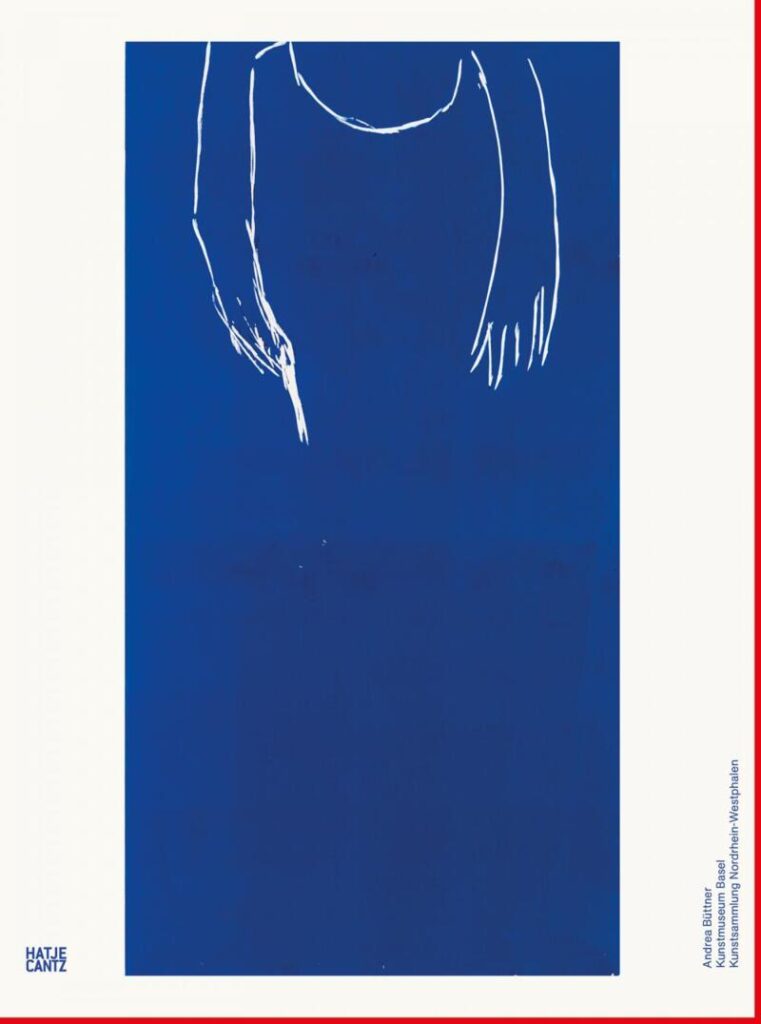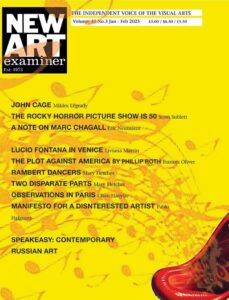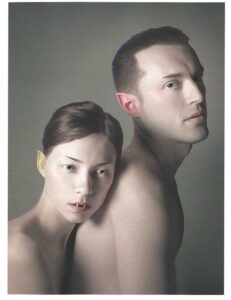David Goldenberg

During the opening of Sharjah Biennale 2023, l met a selector of one of the Venice Biennale Pavilions, who said that as a consequence of Brexit, international money for Art intended for London, would now shift to the arts in Paris. I had no way of knowing whether this was true or not, but l was interested to visit Paris to see for myself visible signs of this influx of money. The opening of Art Basel Paris inside the magnificent Grand Palais was intended to make a statement of intent to the rest of the world.
In a recent article by Christies Guillaume Cerutti, in art newspaper on the art market, and the relationship between London and Paris, showed that London Global art sales are 17% and Paris sales are 8%, so that the UK retains its dominance in the European market, while overall Global centres of art sales remain in NY at 45% and China at 20%.
The previous week Frieze London opened. This year the art fair was redesigned and reduced to a smaller manageable size, designed as a series of interior rooms, with carpets and painted walls and variable size booths to accommodate different types of work
and installations. It was possible to take in the whole fair in one day, however very few works made a lasting impression. The installation Jumbled Alphabet by Nariy Baghramian at SLG was superior with an array of satisfying shapes and materials.
In contrast, Art Basel Paris which replicated the model of an industrial trade fair, with similarities to the former Art Cologne, occupied all parts of the Grand Palais, the vast central ground floor, side corridors, and two tiers and side rooms, with additional exhibitions by single artists in buildings near the Palais. The most important European art galleries were present, including the Jan Mot gallery. I saw this as the collective body of Western Art and Global Art Market, in the form of a cellular organism and ecosystem, which showed no evidence of new thinking and understanding of art, diversity and post colonialism, just space for cultures to enter the market and world art, summarising over a hundred years of European and Western aesthetic history. Over 95% of the exhibitions were inward looking, showing key examples of that history or riffing on that history,
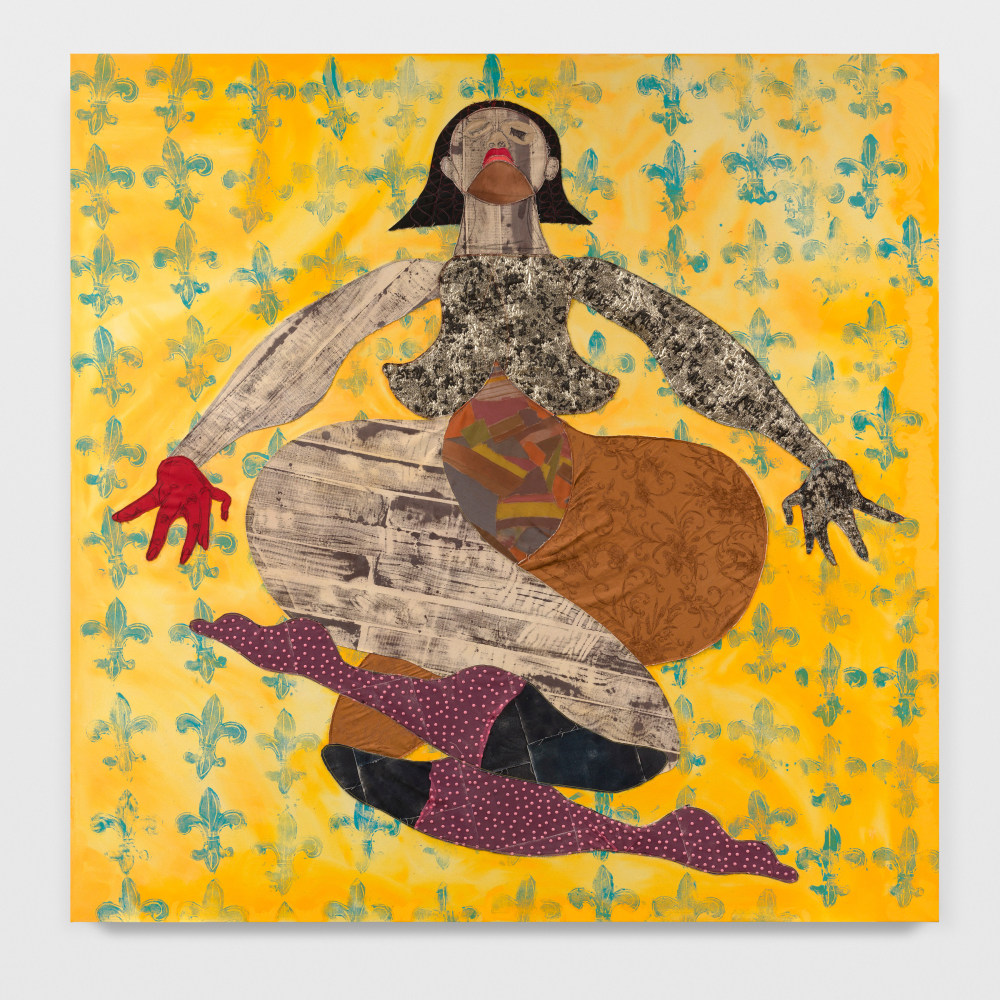
whether figurative or abstract, painting or sculpture.
Both art fairs in that respect can be seen to have retreated to conditions similar to the 1960’s, where painting and sculpture, and conservative values predominated. It was for this reason that Baselitz and Oehlen, who had works in London and Paris, have succeeded so well. Instead of developing a new language, they have tapped into the large pool of western modernist abstract and figurative painting models, and within this conservative convention and narrow restrictions, plumbed an idea of pure aesthetic invention, which a number of other artists are also looking at.
Works that went against this aesthetic pool, works looking at information for example via the cloak of westernisation, such as Walid Raad’s Better be watching the clouds [again] and Bouchra Khalili‘s Sea Drift, subverted aesthetics, the art object, and what is available through perception. Jan Mot gallery, the last surviving gallery of European avant garde, conceptual art and anti-commodified art, presented grey tables with strips of measurements by Stanley Brown, and a small film strip work by Manon de Boer. The Poster work by the great Philippe Thomas’s Ready Mades belong to everyone but then didn’t work. Elsewhere in the fair l saw a black and white photo of Fontana making a cut into a canvas, Clemens von Wedemeyers group of Social Geometries framed digital prints. It was also good to see Marcel Broodthaer, critic of Fordism, showing a vacuum formed plastic relief, American minimalist art, commodity culture and pop art, but again this didn’t work in this context.
The conditions for showing work were brutal, given the mass and quality of works. So that works that fell below par or booths and installations that didn’t quite work or works whose production values were not as good as they should be, stood out immediately, and drew comparison with works and displays that did work. For that reason, Galerie Eva Presenhuber’s blue gridded installation, My House dedicated to one artist, Tschabalaha Sell,stood out, by providing room, focus and an environment for the collected material to gain coherence, to breathe and gain accessibility. Another installation that l thought was successful showed work by the Japanese artist Fuyuki Matsui, including a pencil drawing titled insane woman under the cherry tree.” The installation was a work of art, with small recesses built into the wall to display sculptures, small paintings and drawings. In contrast the installation of Martin Boyce projects, didn’t work as there were too many different types of art, the space felt claustrophobic, and the lighting didn’t did not enhance the installation. Olaf Eliasson and Pae White presented similar looking sculptural works, suspended from the ceiling or mounted on the wall. One body of work looked polished and technically resolved, and the other didn’t. Technical faults and miscalculations distracted from gaining access to the content of the work.
It is sad to note that the generation of American conceptual and appropriation artists, Josef Kosuth, who was represented by a work from the 1980’s, recent work by Sherry Levine and Barbara Kruger, looked very weak and crude. Illustrated very clearly, more than ever, was that projects using an internal critique of the art system, reflecting its terms, history, theorisation, has proven to be misguided and the last gasp of white western artists to assert dominance through perpetuating western cultural colonialism. This was also brought home in the Wesselman exhibition. Although l think Wesselmann’s work and especially the relief works are very interesting and a glimpse of how great contemporary art can be, the project was undermined through the glorification of commodity culture, any sense of self awareness, and utter failure of a critique and understanding of the harm, through global homogenisation and uniformity of cultures and peoples through commodification. In the same exhibition there was a large bombastic shiny, perfect, but vacuous sculpture by Koons, as a celebration of western commodification and equally misguided concept of the religious value of art to transcend what exists. It revealed or exposed, apart from Warhol, the utter failure of the pop art project.
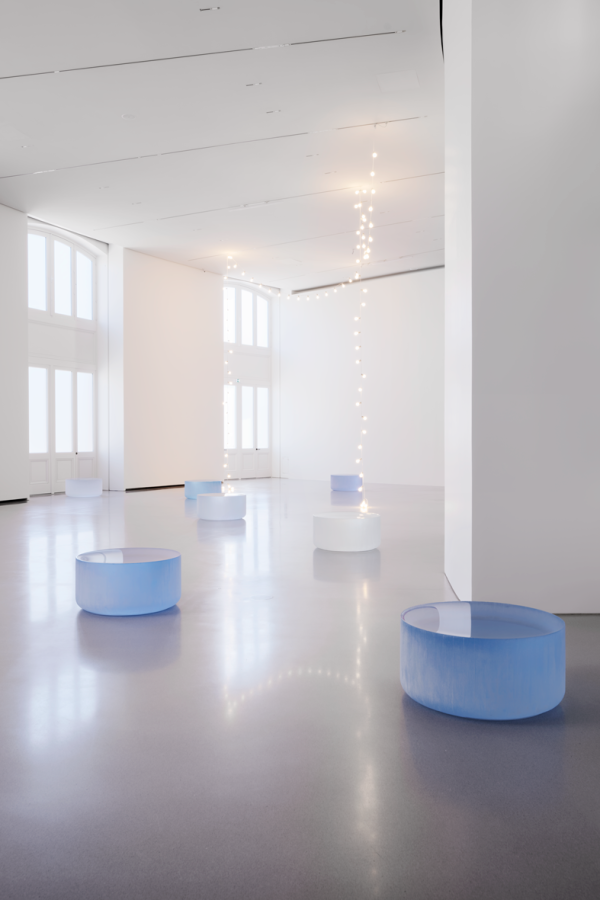
Another reason for visiting Paris was to look at Mohammed Bourouissa’s work. l came across an excellent large wall based mixed media sculpture, Juliette Wagman’s digital photos attached to car body parts, which on reflection l came to see as a car crash, a literal crash and disaster that ends someone’s career but in this case represented a crash of culture opening up a black hole in western culture, gravity collapsing down into itself, crushing culture and history into a mangled ball of art and technology. To expand the notion of comparison further, it was obvious to compare the work to Stella’s late works shown on a narrow walkway on the first floor, which appeared inert. Another comparison is to Oscar Murillo’s recent show in Tate Modern Turbine Hall, that recreated the display of Monet Waterlilies, which came across as propaganda to promote not just Tate Modern’s reduction of art to modernism, but also the recent celebration and revisiting of early modernism or the foundation of European Modernism, which centres the art world back on European culture. Also, modernism as key to global art, at a time when there is supposed to be a global art world
opening up to other cultures and inclusivity, points to a significant contradiction here and the commodification of styles, with the end of development and evolution of art.
Two bodies of works in the art fair worked very well in this context. One series which l call ‘Perfect Objects’ and another looking for the physical embodiment or commodified representation of ephemeral practices. What l mean by perfect objects are sculptural works and objects that are highly focused, and that have shed any form of distraction, so that the viewer has complete access to the physical object, that appear effortless and to have just arrived in that space. Roni Horn’s transparent and opaque glass floor-based objects are the clearest example, along with Urs Fischer’s, digital collaged face panel work; Ugo Rodinone’s yellow painted small branch floor sculpture and brightly painted balancing pebble; and Takashi Murakami’s typical flowers and anime silkscreen paintings. Monica Bonvicini’s Love is blind, a medium size, shiny black panel with a hole and handcuffs, bore a similarity to this category, but its social sexual content pushed the work somewhere else. Seth Price’s new wall based mixed media painting Endless Empty Walls wants to join this new club, but the work was unconvincing through its incomplete synthesis of abstraction, realism and figuration, although the title was fitting under the circumstances.
How do they differ from a reading of minimalism? I have kept in mind a quote from Carl Andre that “an artwork doesn’t contain content”. I think this is probably true, so what to make of works that show so much content today? In general, when you experience minimalist works, you experience the removal of what you want from art and from everyday experience even though a minimalist work has the form of a material fact.
Two pieces, a green circular transparent floor object and a leaning panel, made of several panels of Perspex, glittering pearlescent coloured front facing panel and back reflecting red light, by Ann Veronica Janssen, are minimalist or condensed abstract works, that verged on the decorative, showed a successful interpretation and transition from ephemeral colour gas and light installations into commodities. This sounds obvious and easy but there are so many artists who have failed to make that transition.
Another artist who had works across the art fair, was the German artist Andrea Buttner, who exhibited several large and small-scale wood cuts and small glass paintings. Buttner ‘s diverse practices act as a vehicle for unearthing the foundations of post war
culture and its art historical ideologies and propaganda. I am still unsure about the woodcuts as a vehicle for undertaking such an analysis, with their depiction of nuns and vegetables, in simple lines on monochromatic colour grounds, as a depiction of monastic orders and poverty, protesting wealth and commodification of art and consumer society, with its distinct echo of Agamben’s political philosophical analysis of similar themes. l presume that her doubt and problematisation of the status of the art object is intentional. Here l am reminded of Michael Craig Martins’ 1970’s conceptual work, This is an oak tree, a text next to a glass of water, where the declaration influences how people think and perceive the world, reflecting how propaganda works in society. This interrogation works in parallel to her analysis and unfixing of post war frozen interpretations of concepts and the politics of materials and their ideological position within art, sowing considerable instability when looking at Buttner ‘s work. Despite their simplicity you don’t know exactly what you are looking at. In that respect Buttner’s work complements the great Sturtevant, who had a new exhibition Zip Zap at Ropac, that equally undermines the complete edifice of western modernism. In many respects the peculiarity of the selected works can be seen to be doing the same thing that we found at Art Basel Paris; a succinct overview of art since the 1900’s. Here the categories and genealogy of this history has been completely undermined and thrown into confusion and the arbitrary nature of modernism’s categories shown up and thrown into question. Sturtevant is the only artist who approached whatever can be seen to be a workable form of critique within the western global art.
At the Paris Internationale art fair in northeast Paris, in a former Post Office on five floors, the House of Gaga from LA, showed works by ASMA, an artist duo from Ecuador and Mexico, whose work l was told escapes western art historical references on display at Art Basel Paris presented small painted tin sculptures. What l thought a mental act was encouraging, and showed, however small a step, that here was the glimmer of a break with colonialism and that a completely new universe had opened up. That said overall, the best work in all the art fairs in Paris was to be seen on the ground floor of the Art Basel Paris art fair, despite interesting installations shown on other floors of the building by new and emerging artists, apart from one project that showed a small grey framed drawing against a wall of grey sheets of paper that explored the Architectural space that framed and delimited work.
